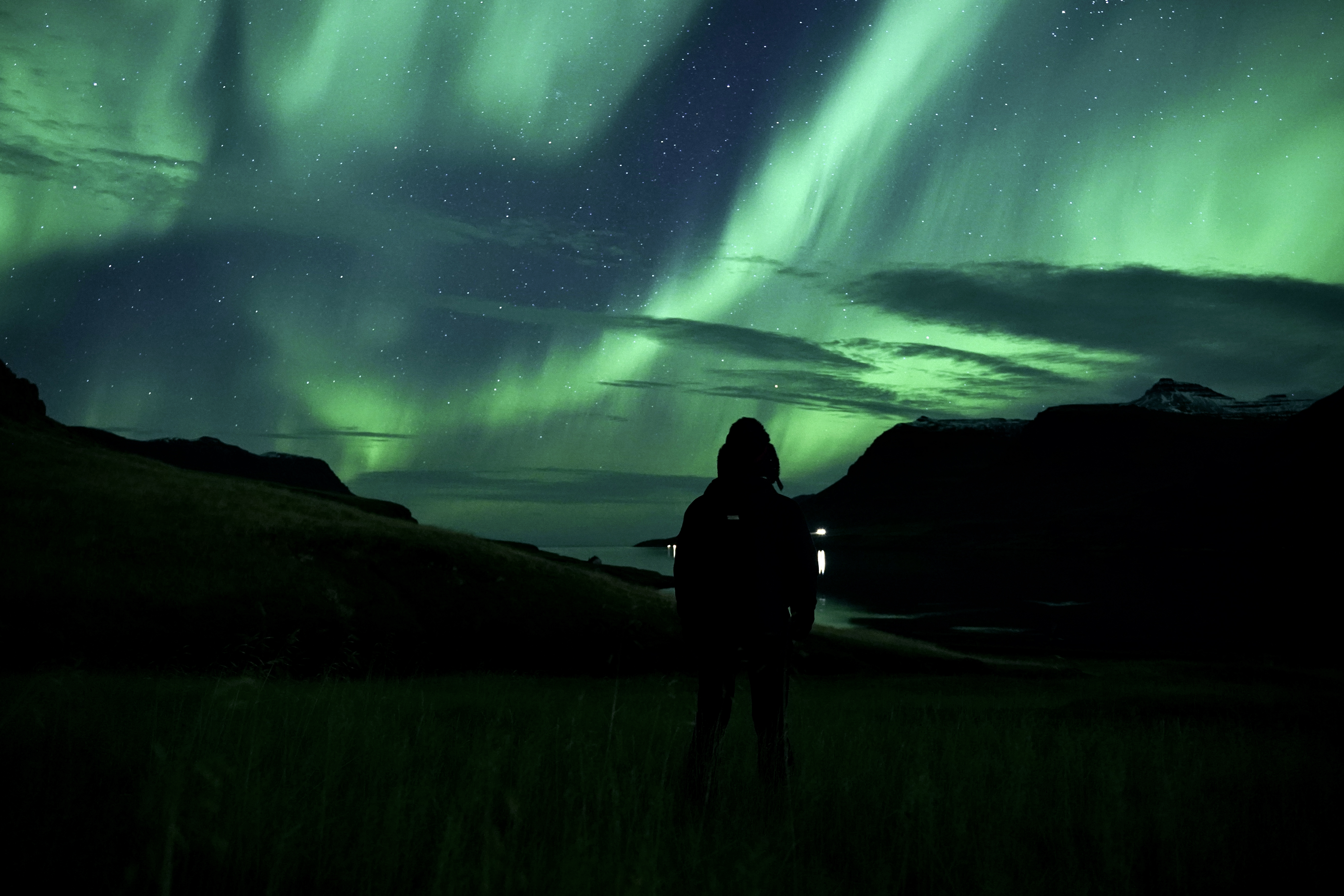The Midnight Sun and Northern Lights: When and Where to Experience Them in Austurland
What is the Midnight Sun?
Iceland’s location close to the Arctic Circle means that the length of its days varies considerably between the seasons. Austurland in midsummer experiences more than 22 hours of daylight. If you live closer to the Equator, even in the mid-latitudes, it feels rather strange to be walking around late at night in broad daylight.
Either side of the summer solstice it never gets really dark, though strictly speaking what you’re experiencing is an extended twilight. You may find that it impacts your body clock, most often in making it harder to get to sleep. Choose accommodation that features blackout blinds or pack an eye mask to help you nod off when you are ready – even if the sky’s not.
The extra daylight can be a real bonus for travellers, however, as that lengthens the amount of time available for sightseeing. You can linger in some of the more remote parts of the East Fjords, for instance, or incorporate more ambitious hikes to waterfalls and valleys inland, without this requiring you to drive back to your overnight base in the dark. Tour operators in East Iceland run hiking and horse riding trips late into the evening in midsummer.
Northern Lights season
In contrast, the Northern Lights are visible to the eye when the skies are darker. In Austurland, this means timing your visit from late August to the middle of April to give yourself the best chance of a sighting. It’s often the case that you’ll have to wait for them to show up, even if greater solar activity is forecast; plan to be dressed warmly if that’s the case, especially in winter.
Though Northern Lights season is a long one, if you look at the statistics, then timing your trip to East Iceland close to the autumn equinox in September or the spring equinox in March is the best time of all. Another advantage of setting out on an aurora hunt in autumn or spring rather than winter is that there’s less likelihood of poor weather which will be a good thing on the region’s back roads.
If there is too much light, then the vibrant greens and purples of the aurora are washed out; even during the winter, if solar activity is relatively low you might only see a faint grey movement in the sky unless you view them via a camera or smartphone screen. There’s no timetable; catching a glimpse of the Northern Lights anywhere requires a lot more luck than it does skill.
Best places to experience these natural phenomena
- Borgarfjörður Eystri
- The East Fjords
- The outskirts of Egilsstaðir
In general, plan to be away from built up areas where it’s darkest and always park your car off the road in a layby or car park. It’s also important to factor in personal safety. For example, though spots such as Mount Snæfell and Dyrfjöll would definitely tick the boxes when it comes to dark skies, you may not be comfortable with the idea of hiking in wilderness areas at night when it’s harder to see the trail. Organised tours may be an answer as the guide will be on hand to ensure you stay upright and don’t get lost.
Nevertheless, what all of these places have in common is that they are dark. After the sun sets, you’ll need to travel to your chosen location, either as part of a tour or independently in your rental car. If it’s the latter, then it’s a good idea to scope out your route and potential parking up front. Not only will this save you time on the night but also the drive will be familiar and there’ll be fewer unknowns.

Photo: Dusky Mercak

